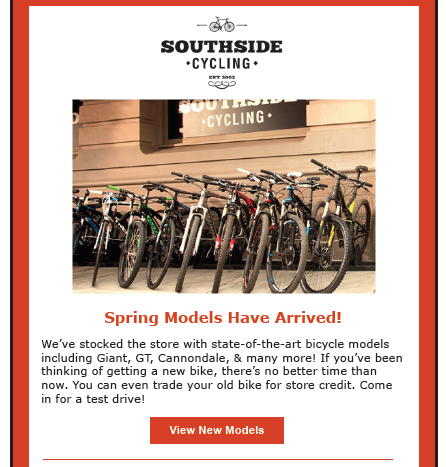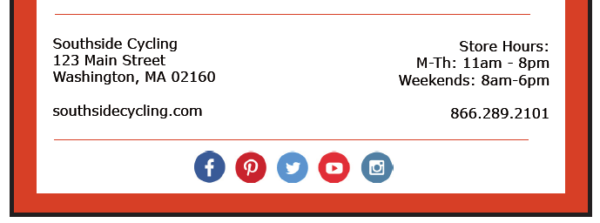[Checklist] 7 Essential Elements of Email Design for Retailers
![[Checklist] 7 Essential Elements of Email Design for Retailers](https://blogs.constantcontact.com/wp-content/uploads/2016/03/email-design-checklist-retail-ft-image.png)
The next installment of our Virtual Workshop Series for Retailers: How to Increase Sales with Email Marketing focuses on showing you how to design a marketing email in 15 minutes or less.
(If you missed the live session, you can view a recording of the workshop here.)
You’ll see how simple it is to create a mobile-responsive email template, which means your email adapts to the device someone is reading it on, for your time-based promotions and non-promotional emails.
What you’ll end up with is an email that matches your brand, communicates your message effectively, and looks great on any device. We’ll also show you how to save your new template so you can reuse it at any time and speed up your entire email creation process.
Here’s how to get the best possible results with the minimum amount of effort.
Once you create your reusable email template, all you’ll need to do is update the content, which amounts to a picture, paragraph, and call to action.Download your copy of the Email Design Checklist and follow along with the steps below.Let’s take a look at the seven essential elements you’ll need for a winning marketing email.
1. Header

This header section of your email is also known as the envelope fields, and although it’s not typically something you’d think of as a design element, it’s the first thing your reader sees in their inbox.
And just like a piece of postal mail, who it’s from plays an important part in influencing your decision to open the mail. You’ll want to be sure your email contacts recognize that the message is coming from your business.
The subject line also helps the reader decide whether or not they want to open the email. With 53 percent of emails opened on a mobile device, you’ll want to design your subject line with mobile in mind. Think four to seven words to make the most of the limited space within the mobile inbox.
2. Preheader

The preheader acts like the second subject line on a mobile device; use it to further entice the reader to open your email. Make the most of the first five to eight words.
3. Logo and colors

When the reader opens your email, your logo and colors are going to be the first things to stand out. Use these design elements consistently so your email contacts easily recognize your brand.
4. Image

An image visually captures your reader’s attention. Use an image that supports the purpose of your email message. If you’re sending a message about a sale on a particular product, use an image of that product to support your message.
5. Text

When people read online or on a mobile device, they typically scan the content before they read it. Design your text in a way that stops the reader and makes it easy to consume. Use a larger headline to lead the reader to your message body, and the message body to lead the reader to your call to action.
6. Call to action

Be sure to include a command that tells the reader what they should do next. You may want your reader to visit a specific page on your website, to call your store, or redeem a coupon. Use a button to make your call to action stand out and easy to click.
7. Footer

The footer section of your email design remains the same from email to email and contains important contact information about your business.
Include your address, phone number, website, and hours of operation in the footer section. Also, include links to your social channels, so people know how to connect with you on the social networks of their choice.
Make the most of these seven essential elements of email design.

Download your copy of the Email Design Checklist so you can be sure you’re creating an email that matches your brand, communicates your message effectively, and looks great on any device, every time.
Comments
Post a Comment